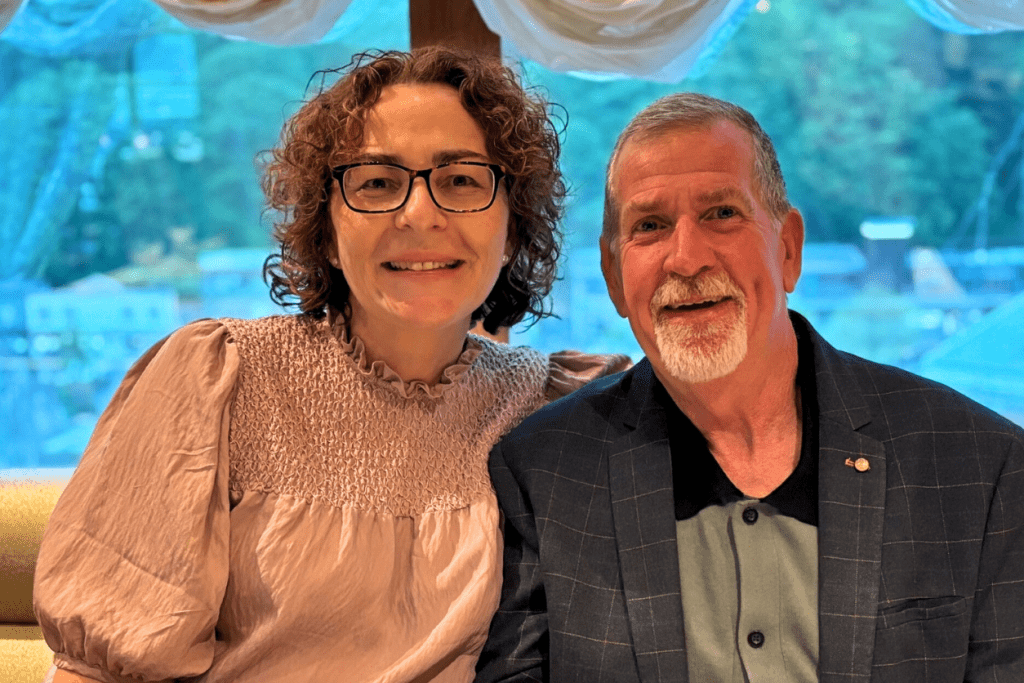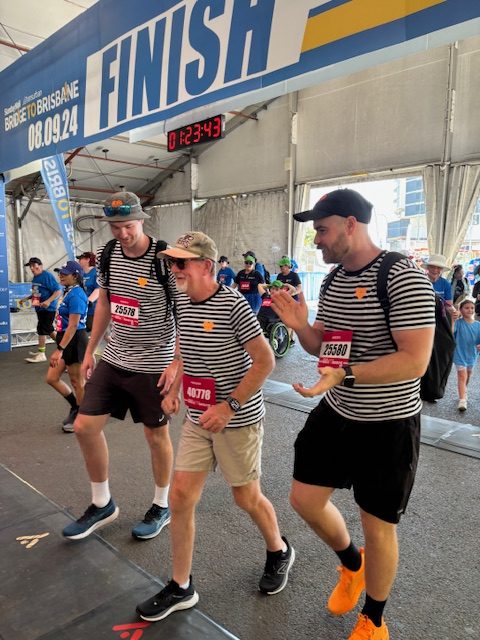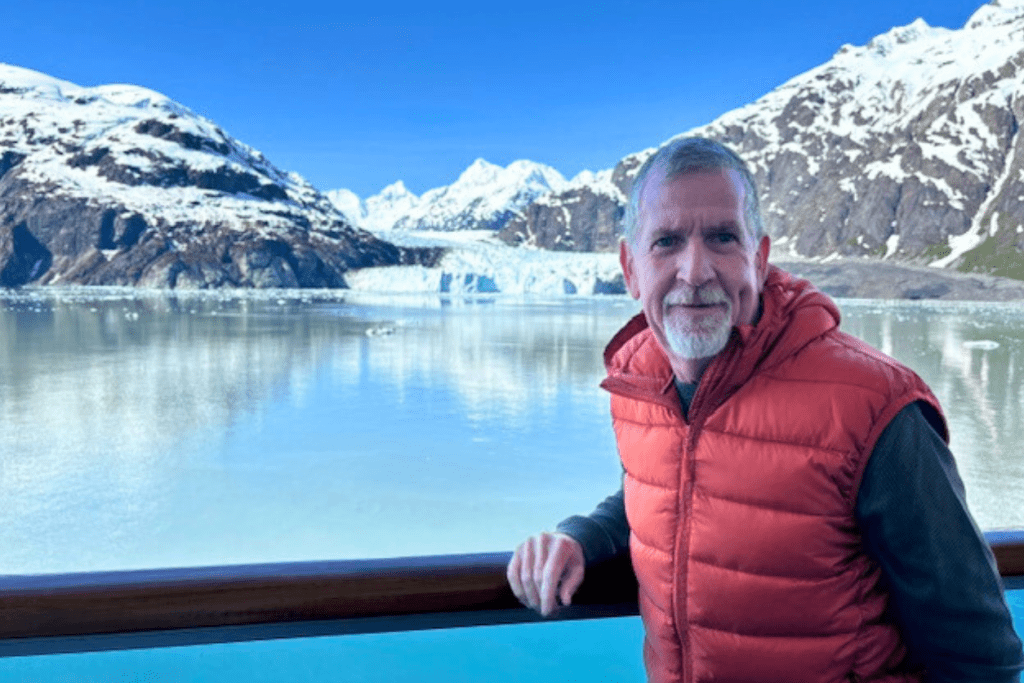Paul and Tracey’s journey
 Paul, a 55-year-old upholsterer from Brisbane, was at work when his life took an unexpected turn. After feeling unwell, Paul collapsed onto a concrete floor. Luckily, a piece of foam cushioned his fall, sparing him from further injury. Initially, Paul assured his colleagues that he had just fainted and felt okay. However, his coworkers trusted their instincts and called an ambulance as a precaution.
Paul, a 55-year-old upholsterer from Brisbane, was at work when his life took an unexpected turn. After feeling unwell, Paul collapsed onto a concrete floor. Luckily, a piece of foam cushioned his fall, sparing him from further injury. Initially, Paul assured his colleagues that he had just fainted and felt okay. However, his coworkers trusted their instincts and called an ambulance as a precaution.
Their decision was lifesaving. On the way to the Princess Alexandra Hospital (PAH), Paul’s condition deteriorated rapidly. Tracey his wife shared, “Paul’s condition took a very downward turn, and he lost consciousness and had multiple seizures. In emergency, they discovered that Paul had a massive brain haemorrhage. He had a DAVF (Dural Arteriovenous Fistula), in his cerebellum, that had burst with no symptoms apart from a headache and pain behind his eye.”
Reclaiming independence
“After 8 hours of emergency surgery to embolise the fistula and then remove a large clot that formed, Paul spent 2 weeks in ICU.”
Paul went on to another 11 months in hospital. He shares, “I had to learn to eat, walk and talk again. The staff there were absolutely amazing and for the last 6 months as an inpatient I was at the Jasmine Unit in Wynnum, where I participated in daily therapy and rehabilitation which allowed me to finally go home.” Paul shares “Through my journey in hospital, we had one very good doctor, he came in and said Paul will not be like this all the time. This is the new you. Every day is a new day for both of us. And if that’s how you approach it, everything’s new, and you learn and do the best you can.”
Coming home, however, wasn’t as simple as opening the front door. While Paul was in the hospital, he and Tracey were in the middle of building their dream home. Suddenly, blueprints had to change. Instead of just choosing paint colours, Tracey was modifying layouts to suit Paul’s new needs. “We had just sold our house. We were about to start building. Everything was very topsy-turvy, and I didn’t know what to do. My husband was in ICU, and I had to move!” Tracey recalls.
But they made it work. And in the midst of all the upheaval, one small moment stood out—Paul sent Tracey a text message while she was at work. It was a simple milestone but a monumental step forward. Now, Paul and Tracey tackle challenges together, including their annual participation in the Bridge to Brisbane. Last year, Paul walked the course on his own—a milestone that felt impossible just a few years earlier.

Support that made a difference
Throughout his recovery, Paul leaned on a network of support that included his wife, Tracey, their son, Lawson, and the dedicated healthcare team. “My wife and family were directed to Synapse as a source of information through the hospital,” Paul explains. “The resources they provided didn’t just help me, but also supported my family and friends in understanding my condition and recovery process.” And while the dynamics of their relationship have changed, their humour has remained intact. When asked if the journey had strengthened their relationship, Paul replied:
“Yes, of course it has. Tracey is wonderful… but I’m still a better driver.”
(Small catch—Paul doesn’t currently hold a driver’s license).
Finding new passions and moving forward
Paul’s recovery also brought unexpected joys. He discovered a love for LEGO, a hobby that became a key part of his rehabilitation. “I’ve used building LEGO to help with my recovery,” he says. More than just a fun activity, LEGO helped Paul rebuild fine motor skills, improve problem-solving abilities, and regain focus—all crucial elements in brain injury recovery.
Paul has also found joy in gardening and supporting his favourite NRL team, the Parramatta Eels. These passions remind him to celebrate life’s small victories. Although Paul is not currently working, he remains optimistic about the future. He hopes to find meaningful employment as he continues to recover. “It’s about taking one step at a time,” he reflects. “Things do get better if you keep looking forward.” Last year, the couple embarked on an Alaskan cruise, an unforgettable adventure that proved just how far Paul had come.

Through the highs and lows, one thing has remained constant—Paul and Tracey’s unwavering partnership. “Despite the long and difficult journey post-Paul’s ABI, I have realised just how strong our relationship still is. We are navigating life together no matter what curveballs are thrown our way,” Tracey says.
From the quick-thinking colleagues who called for help, to the medical team that saved his life, and the family that stood by his side, Paul’s story is one of resilience, love, and an unshakeable sense of humour.
And, of course, the belief that he’s still the better driver.